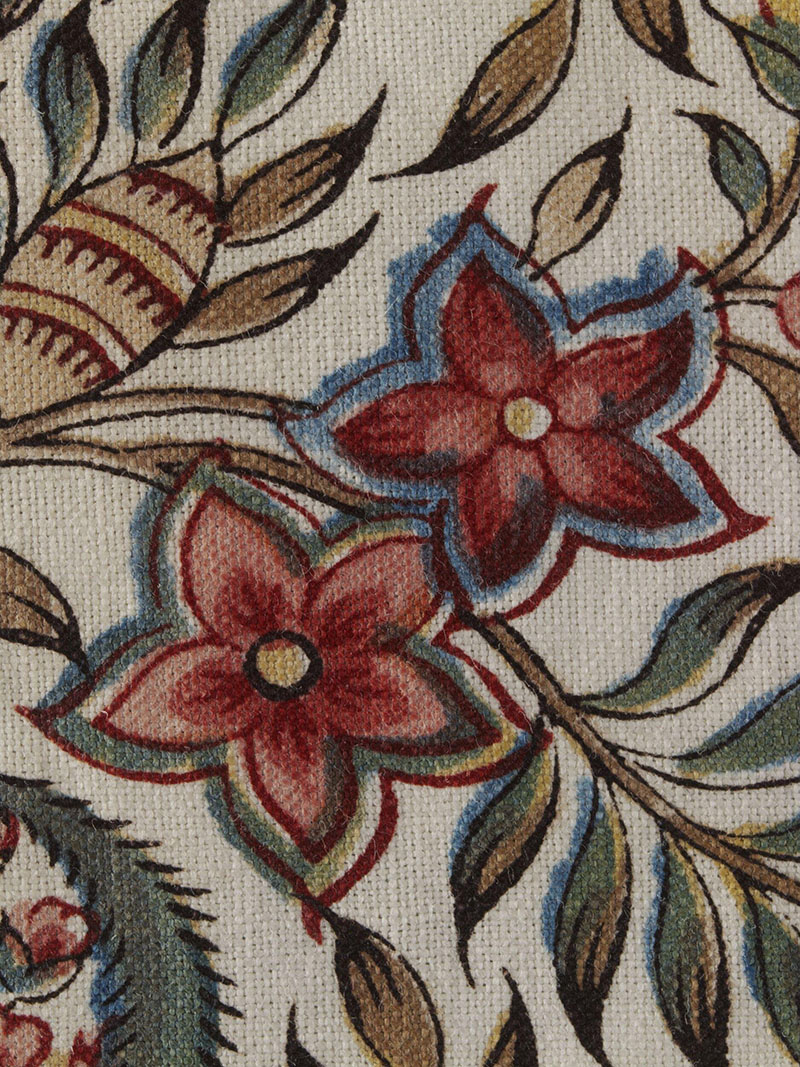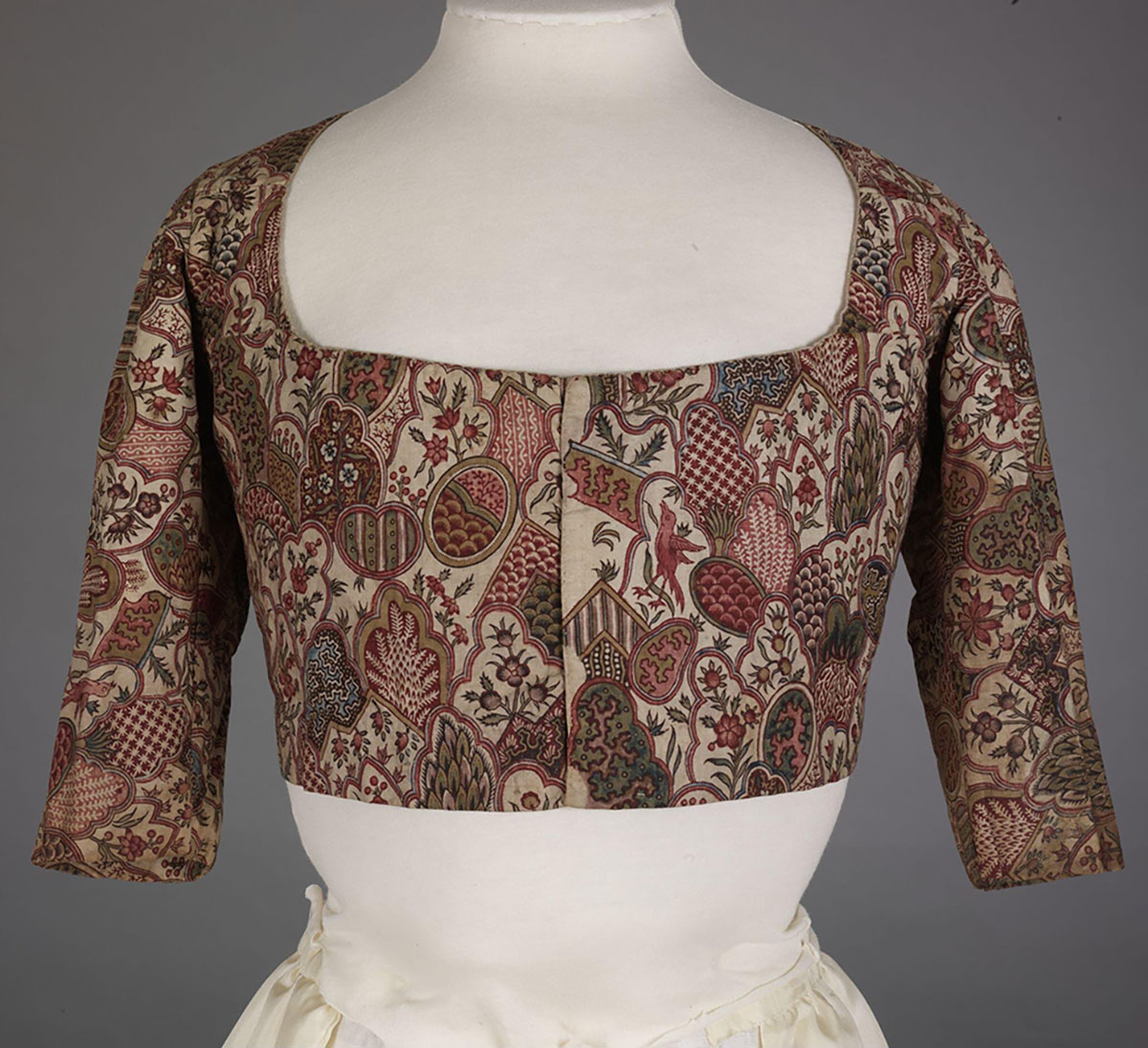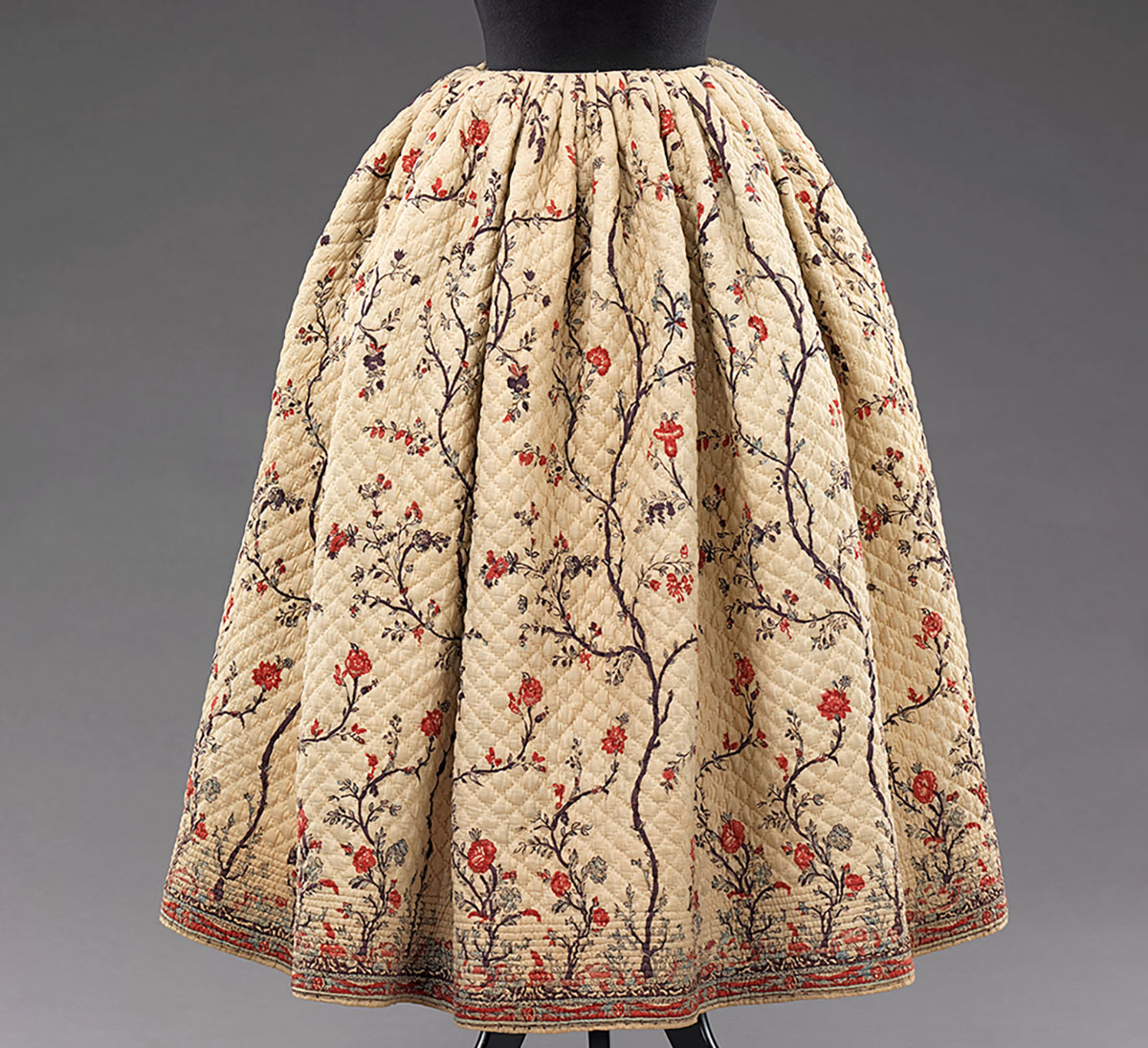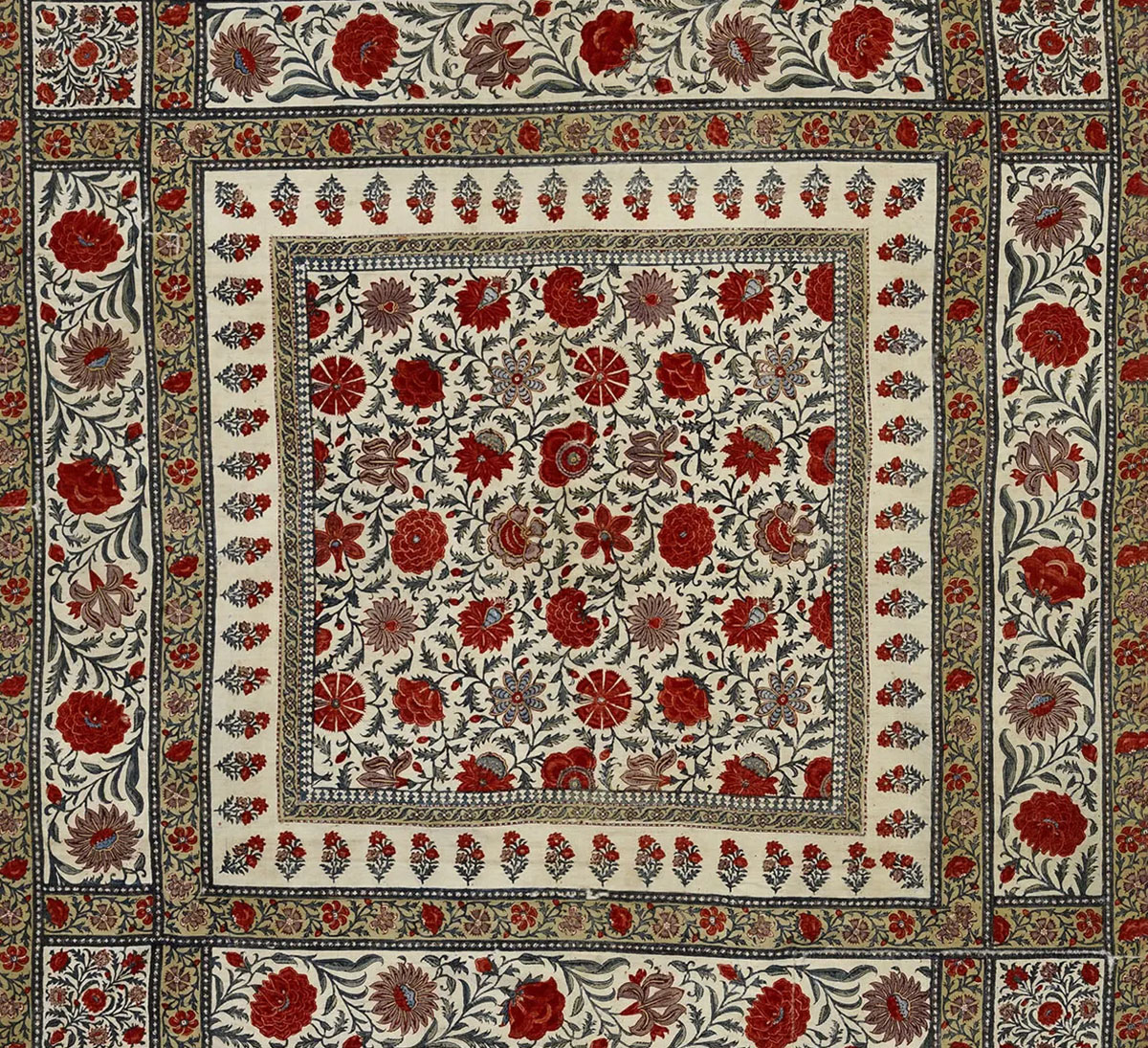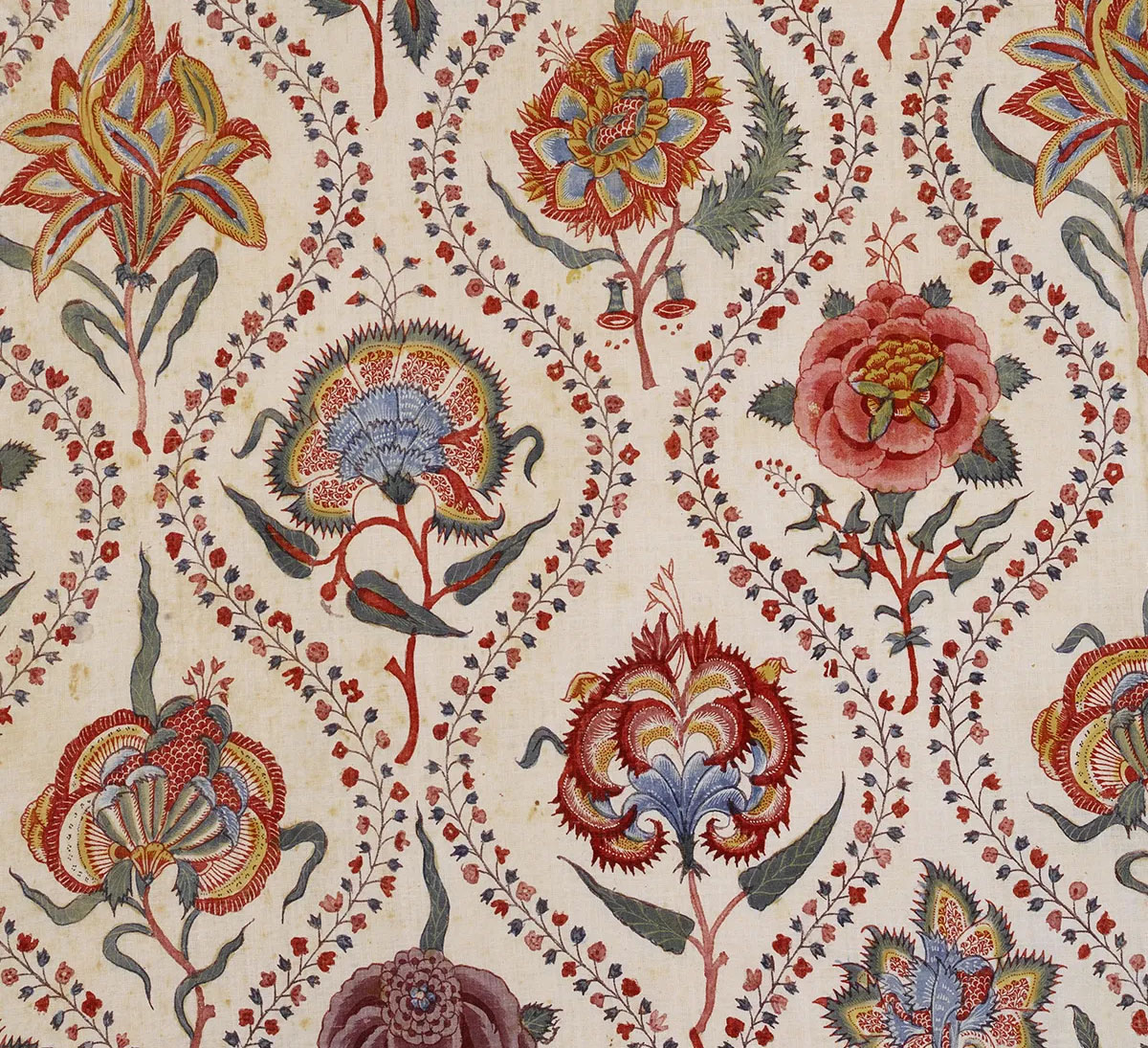ARTICLE
Indiennes
However, by 1686, lobbying by the French wool industry led the royal council of Louis XVI to declare the first European ban on calicoes. Armenians were expelled from workers from Marseilles and other cities in 1687. While Britain would also restrict the import of cotton textiles through the Calico Acts of 1720 and 1721, the French prohibition was particularly harsh, stifling calico imports and the local production of Indiennes. It was, however, routinely flouted. Smugglers diverted international trade towards underground markets in France, and printers produced the fabric in Avignon (then under Papal jurisdiction), and Colmar and Mulhouse (then outside the borders of the kingdom of France). Another impediment to the sale of Indiennes was the African market’s mistrust of French imitations of Indian fabrics, though this would change with the colonisation of the continent and improvements in manufacturing. After the ban in France was lifted in 1759, dyeing techniques were perfected and local designs standardised. French artisans began to import plain cloth from India and West Asia to be printed in France, and the industry grew rapidly. Apart from those already mentioned, significant centres of Indienne production in France were Rouen, Dieppe, Paris, Bordeaux, Nantes and Limoges.
While indiennes and English chintz fabrics are very similar, and the terms are often used interchangeably, there remain some key differences. English chintz is glazed and thus has a sheen, while French indiennes retain the plain cloth’s original texture. Indiennes also use garance or red dye as a ground more often than indigo, whose production and trade was controlled by the British Crown. The Paisley motif is also less commonly used in French indiennes. Instead, print motifs typically include natural imagery from the French countryside, such as olive and lemon branches, vines, lavender sprigs and cicadas, usually paired with images of flowering shrubs. Sunflowers and mimosas, introduced to Europe from Asia and Africa around the same time as indiennes themselves, can also be found. While traditional indienne patterns consist of two-dimensional, undulating and uniformly spaced motifs, advancements in dyeing have allowed for more realistic imagery with shading and subtler colours to be printed on indiennes, although these have historically been less popular.
Today, Indiennes continue to have a significant market in the West, particularly as a fabric and design aesthetic reminiscent of the colonial period in South Asia.
Bibliography
Our website is currently undergoing maintenance and re-design, due to which we have had to take down some of our bibliographies. While these will be re-published shortly, you can request references for specific articles by writing to hellomapacademy@map-india.org.




